The legacy of César Manrique: Map of his work in the Canary Islands and its cultural impact.
César Manrique, emblematic figure of the Canary Islands, left a significant legacy through his art and his commitment to nature. His work encompasses painting, sculpture and architecture, integrating the natural environment with the cultural development of the region. This article explores the map of his work in the Canary Islands, highlighting his impact on the preservation of the Canarian landscape. It will analyze his most emblematic works and their influence on local culture.
César Manrique’s legacy is deeply linked to the cultural and natural identity of the Canary Islands. His work, spread over several islands, is characterized by the harmonious integration between art and environment, giving absolute priority to the conservation of the landscape. Through an interactive map, it is possible to discover his most emblematic interventions:
from viewpoints and cultural centers to interventions in natural spaces. Manrique was a pioneer of sustainable tourism, promoting a model respectful of the territory and firmly opposed to overcrowding. This guide allows you to explore his influence and learn about his commitment to the balance between development, art and nature.
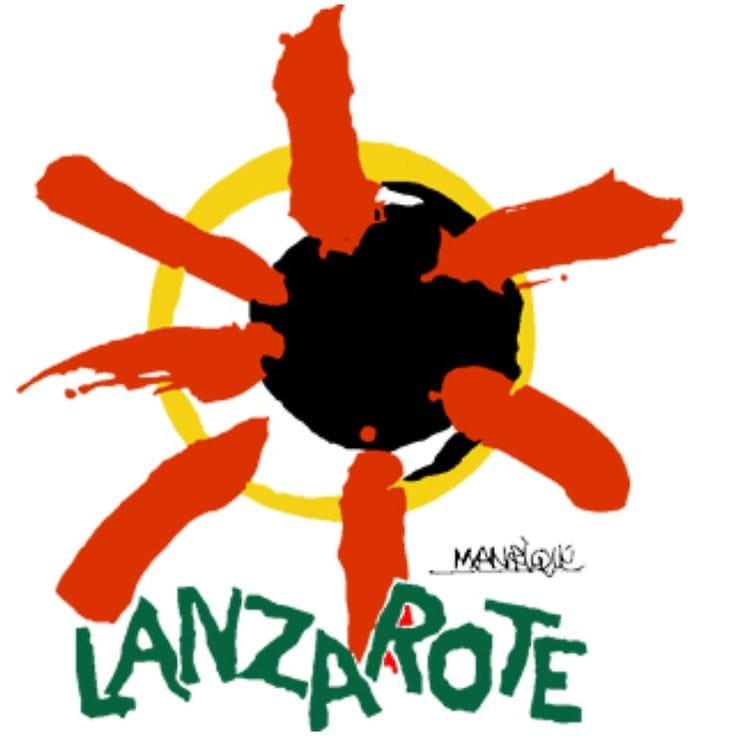
1. Historical and cultural context of César Manrique
The context in which César Manrique developed his work was crucial to understand his artistic approach and his commitment to nature and Canarian culture.
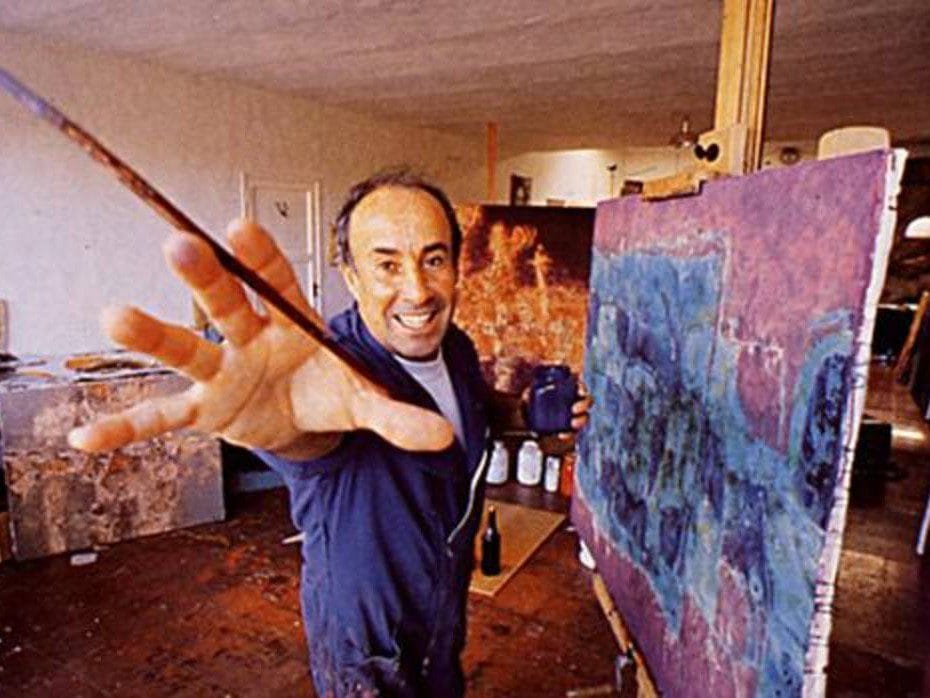
Artistic influences in Madrid
Manrique’s training took place in Madrid, where he had the opportunity to immerse himself in a vibrant artistic environment. During his stay in the capital, he absorbed the various currents of contemporary art. The avant-garde of the 1940s and 1950s marked his vision, allowing him to experiment with innovative techniques and styles.
The surrealist and abstract movements of the time also left a mark on his work. Manrique was influenced by renowned artists, as well as by his peers at the academy. This mix of influences contributed to his ability to integrate art with its natural surroundings, creating a harmony between aesthetics and ecology.
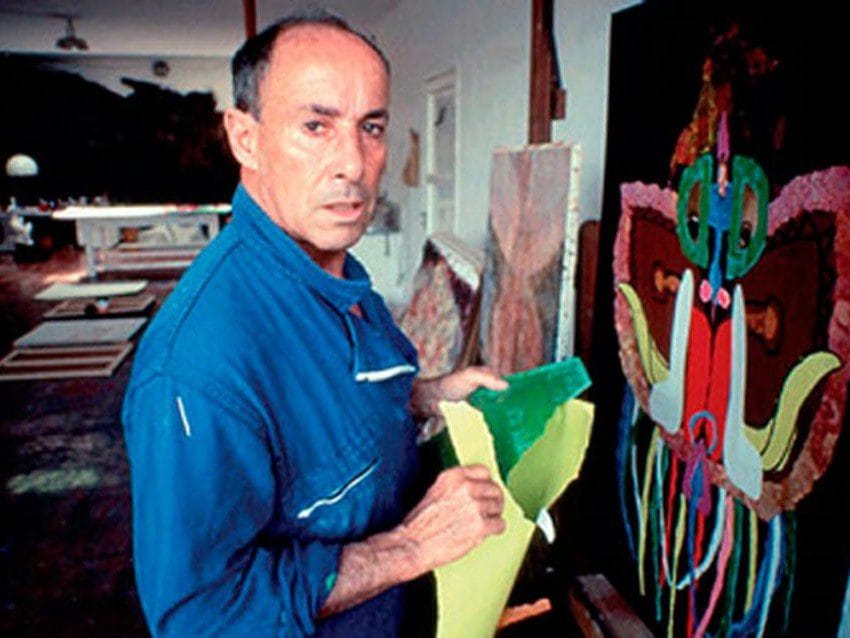
Lanzarote in the 1960s
Returning to Lanzarote in the 1960s meant for Manrique a reunion with his homeland and its volcanic landscapes. At that time, the Canary Islands were in a period of transition. The threat of massive tourist development could compromise the essence of Canarian culture and its natural environment.
The traditional architecture and unique landscapes of Lanzarote became the basis of his work. Manrique sought to apply planning principles that would encourage sustainable and environmentally friendly development. His ideology focused on a model of tourism that preserved local identity and the beauty of the island’s landscape.

Defense of the natural landscape of the Canary Islands
The defense of the natural landscape was one of the fundamental pillars of César Manrique’s work. Faced with the growth of tourism, he became a fervent defender of the conservation of the Canarian environment. For him, nature and art could not exist one without the other. He believed that development should go hand in hand with the protection of the natural heritage.
Manrique used his influence to raise awareness of the need to preserve local ecosystems, promoting initiatives that fostered respect for biodiversity. His works not only beautified the island, but also educated generations about the importance of sustainability.
2. Emblematic works of César Manrique in the Canary Islands
César Manrique left a set of emblematic works that reflect his commitment to the integration of art and nature in the Canary Islands. These projects are not only a reflection of his aesthetic vision, but also of his love for the natural environment of his native land.
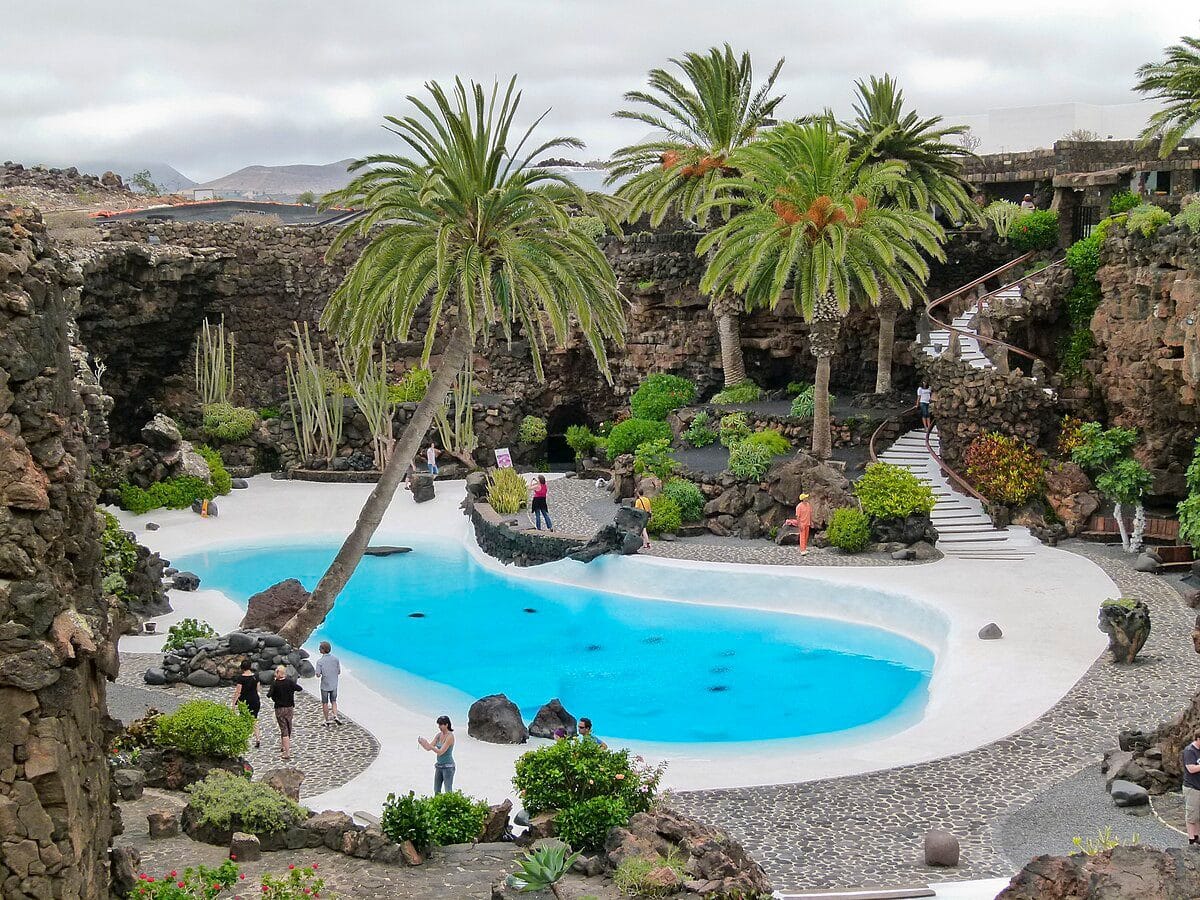
The Jameos del Agua
Considered one of Manrique’s masterpieces, this cultural complex combines art and nature in a volcanic environment. Its design transforms an old volcanic tube into a space where art meets the ecosystem of Lanzarote.
Integration with the natural environment
Jameos del Agua is characterized by its perfect fusion with the surrounding landscape. Using elements such as natural light and native materials, Manrique created an environment that respects the island’s geology. The paths, sculptures and rest areas are designed to provide a unique sensory experience for visitors.
Ecological value of jameito
This space is home to the jameito, an endemic crustacean species found only in the waters of the Jameos. The protection of this species highlights Manrique’s commitment to environmental conservation and local biodiversity. This ecosystem is an example of how art can serve as a tool for ecological awareness.
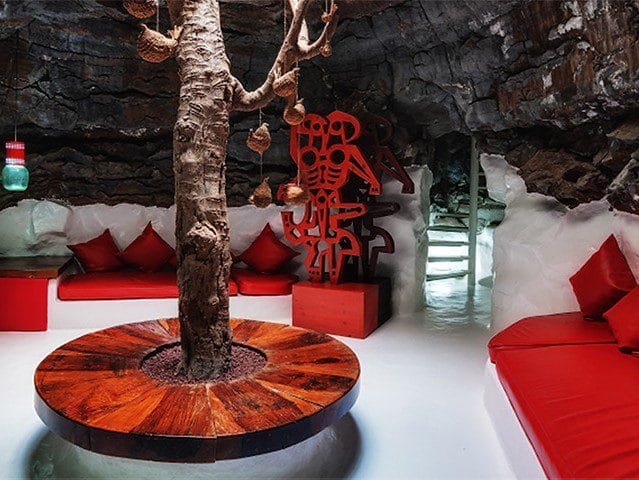
César Manrique Foundation
Located in Manrique’s home in Tahíche, the Foundation was established to preserve his legacy and promote Canarian culture. This space has become a nerve center for the teaching and dissemination of art and nature.
Preservation of the legacy
The foundation houses an extensive collection of his works and materials documenting his impact on the arts. Since its opening, it has worked to preserve and promote his philosophy, attracting both tourists and researchers interested in his work.
Temporary exhibitions
The place also hosts temporary exhibitions of contemporary artists, establishing a dialogue between Manrique’s work and new artistic currents. This fosters an atmosphere of reflection and cultural renewal in connection with nature.
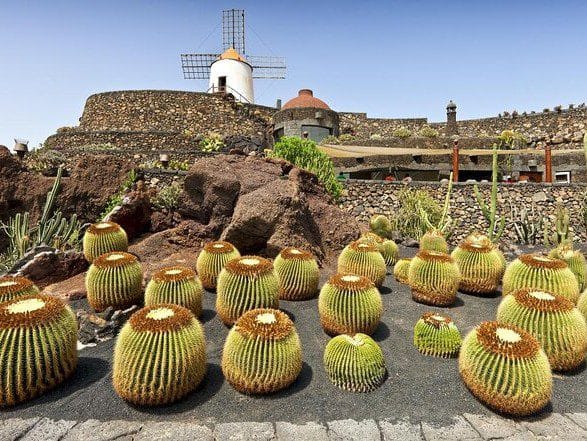
Cactus Garden
This garden, inaugurated in 1990, stands as a tribute to the flora of the Canary Islands, displaying more than 1,400 species of cacti and other succulents. Manrique beautifully disguised the garden’s design on an old plot of land in Loeches, fulfilling his vision of sustainability.
Tribute to the flora of the Canary Islands
In the Cactus Garden, Manrique celebrated the biodiversity of the Canary Islands through a careful selection of plants adapted to the island’s climate. Here, visitors can appreciate the beauty of the island’s flora and learn about its adaptability in difficult conditions.
Design and sustainability
The use of indigenous materials in the garden’s design reflects Manrique’s philosophy of the convergence of art and nature. This space seeks to be not only aesthetically pleasing, but also a model of sustainability and environmental respect.
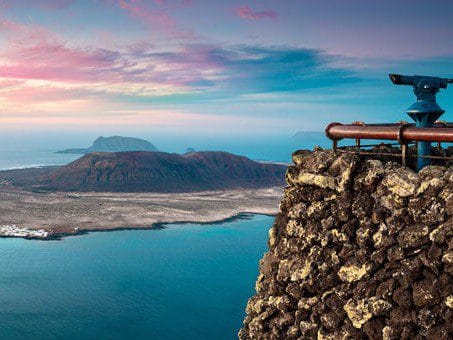
Mirador del Rio
Inaugurated in 1971, the Mirador del Río offers spectacular views of La Graciosa and the Chinijo archipelago. The construction is integrated with the orography of the island, offering a striking visual experience.
Design and panoramic view
The lookout is designed so that the structure itself appears to flow with the surrounding landscape. Manrique used glass and stone to create a sense of continuity between the building and its surroundings, offering visitors a deep connection to Lanzarote’s natural beauty.
Educational spaces
The Mirador del Río includes spaces dedicated to environmental education, where the geographic and ecological characteristics of the area are explained. This underscores Manrique’s interest in promoting environmental awareness and visitor education.
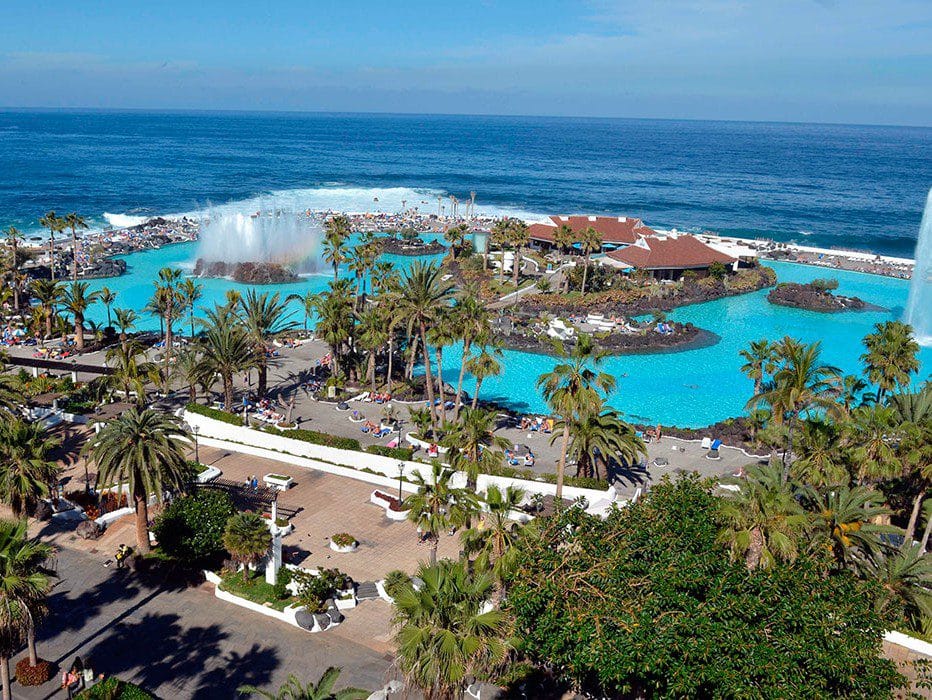
Martiánez Lake
This leisure complex, located in Puerto de la Cruz, is one of Manrique’s most important works. Its design incorporated swimming pools, gardens and recreational areas, all in harmony with the maritime environment.
Integrated architecture on the coast
Manrique achieved a perfect fusion between the architecture of Lake Martiánez and the coast, using organic forms to make the space appear to flow into the ocean. This work has become a symbol of Canarian identity.
Transformed public space
The lake radically transformed a public space, becoming a meeting point for locals and tourists alike. The work demonstrates how architecture can revitalize urban areas without clashing with the surrounding nature.
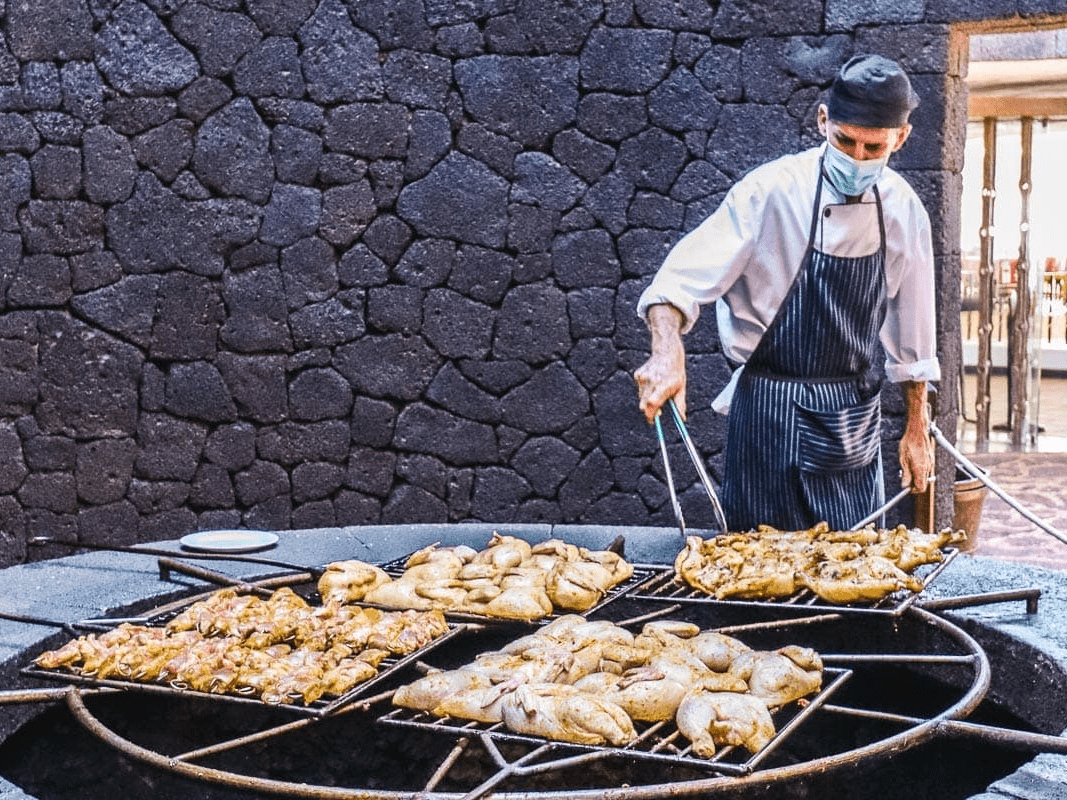
El Diablo Restaurant
This restaurant is innovative in its conception. Manrique designed a system that allows cooking using the natural heat of the volcano.
Utilization of volcanic heat
The design of the restaurant shows how Manrique explored the symbiosis between gastronomy and sustainability. The use of geothermal heat is not only an example of creativity, but also reinforces the connection between the Canarian culinary culture and the natural environment.
Gastronomy and sustainable design
El Diablo offers a unique dining experience, where typical Canarian dishes can be tasted. The inclusion of natural elements in the design creates a harmonious atmosphere that reflects Manrique’s philosophy of respect for the environment.
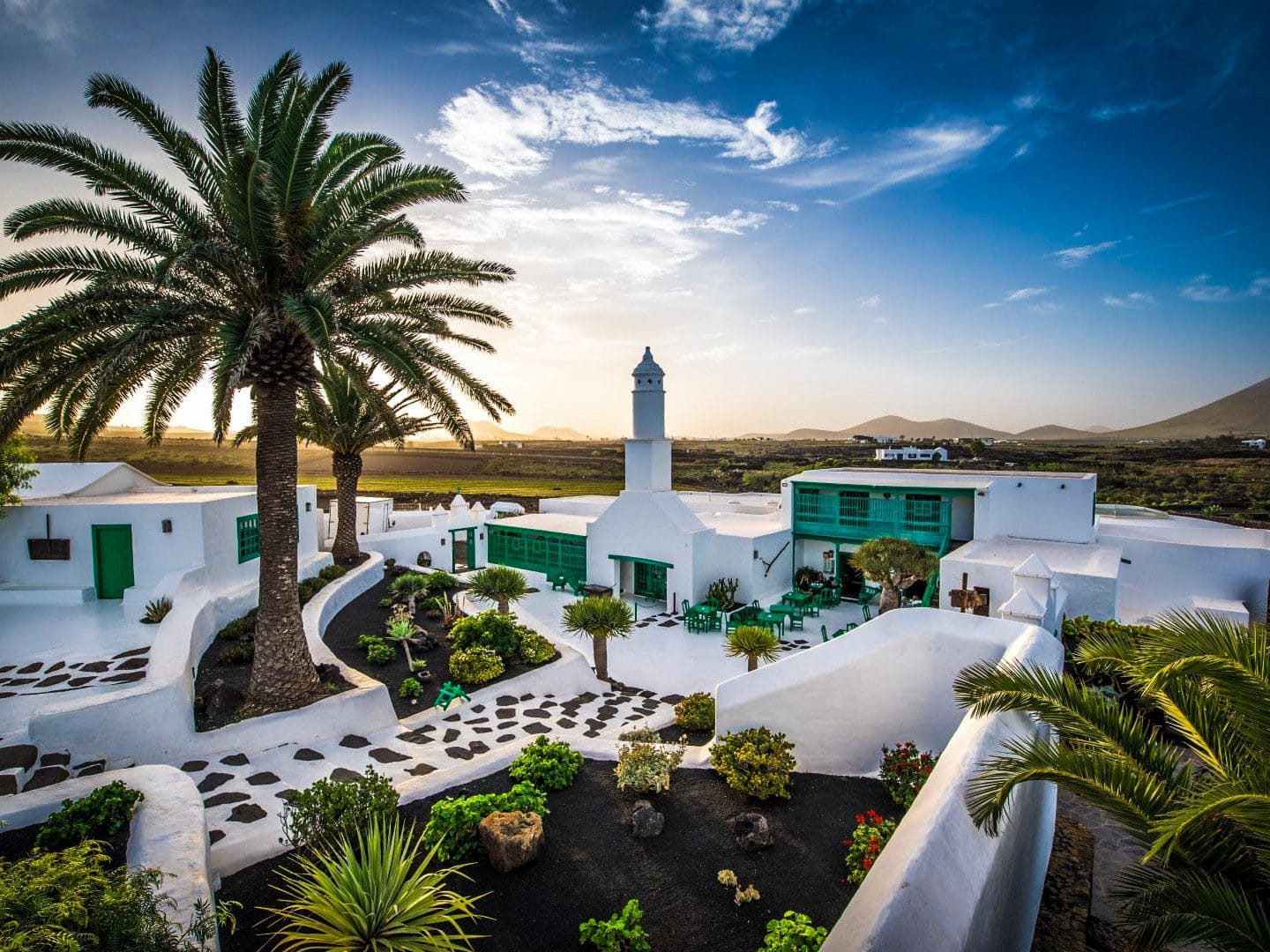
Casa-Museo del Campesino
This cultural center in Lanzarote is a tribute to the traditional life of the Canarian peasants, designed by Manrique to highlight the agricultural history of the island.
Celebration of local traditions
The House-Museum celebrates the customs and techniques of peasant life, offering visitors a deep insight into the cultural heritage of Lanzarote. The architecture blends in with the landscape, inviting visitors to learn about the rich agricultural history of the area.
Cultural and educational activities
This space not only exhibits local history, but also organizes cultural activities that aim to keep traditions alive. The workshops and events promoted here are a key element to educate about Canarian culture and its legacy.
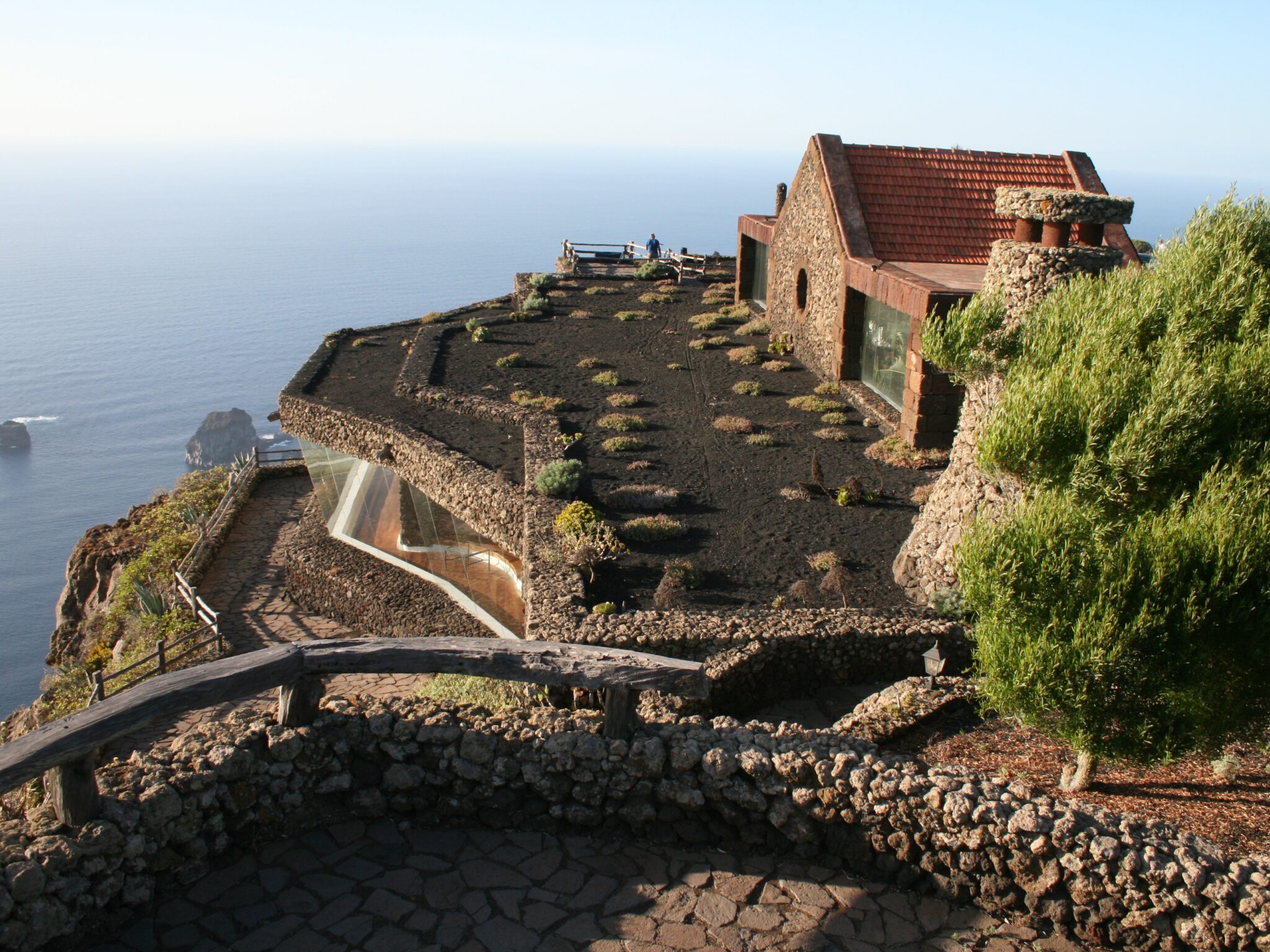
La Peña Viewpoint
Located in El Hierro, this work is yet another manifestation of Manrique’s talent for merging architecture with geography. It offers unparalleled views of the impressive volcanic landscape.
Fusion of architecture and nature
El Mirador de la Peña is designed to blend completely into its surroundings, using local materials that blend in with the landscape. Visitors can enjoy its beauty while being educated about the natural history of the site.
Landscape value
The work is not only an observation point, but also a tribute to the natural beauty of El Hierro. Manrique was able to bring aesthetic and educational value to a simple viewpoint, turning it into a space that invites contemplation and learning about Canary Island nature.
3. Cultural impact of César Manrique
César Manrique's influence on the Canary Islands is undeniable. His work has marked a before and after in the aesthetics and environmental awareness of the region.
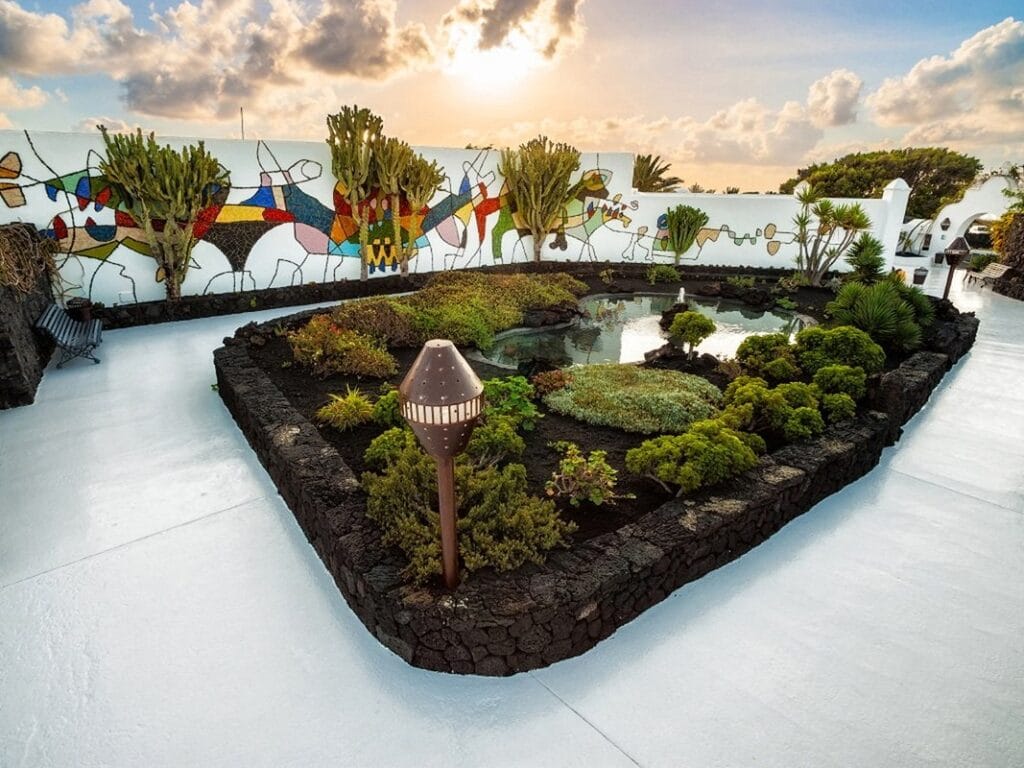
Influence in the Canary Islands
César Manrique’s legacy has transformed the way Canary Islanders view their environment. His commitment to nature and local culture has fostered a sense of belonging and protection of Canarian identity. Through his works, Manrique promoted responsible tourism, encouraging both residents and visitors to value the landscape and cultural heritage of the islands.
- Promotion of sustainable tourism.
- Awareness of local biodiversity.
- Reconsolidation of the Canarian cultural identity.
Thanks to his approach, projects that were once considered merely commercial have evolved to include elements that highlight the heritage of the Canary Islands. This transformation has influenced generations of artists, architects and environmentalists, who have adopted Manrique’s philosophy of integration into their own creations.
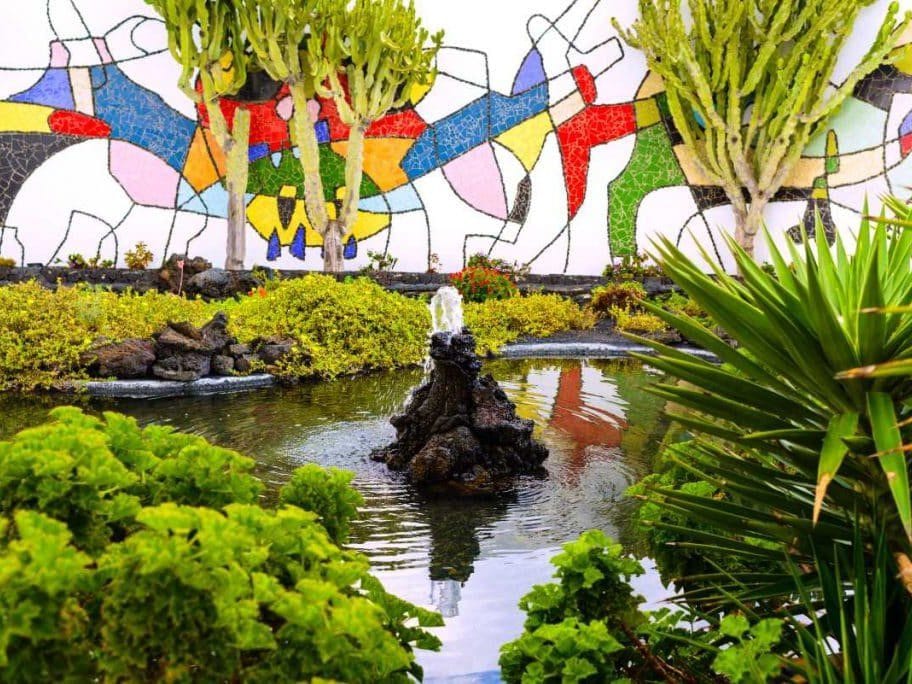
Contribution to art and nature
Manrique not only left a mark in the artistic field, but also became a symbol of the struggle for the conservation of the natural environment. His work is characterized by a constant dialogue between the artistic and the ecological, which has inspired numerous artistic and ecological movements in the islands.
- Promotion of sustainable architecture.
- Creation of spaces that promote environmental education.
- It inspires new generations to explore the relationship between art and nature.
His work has helped to raise public awareness of the need to protect natural spaces from the pressure of tourism and industrial development. This connection between art and nature has been recognized not only in the islands, but also in other regions of the world, where his philosophy has been adopted as a model to follow in conservation projects.
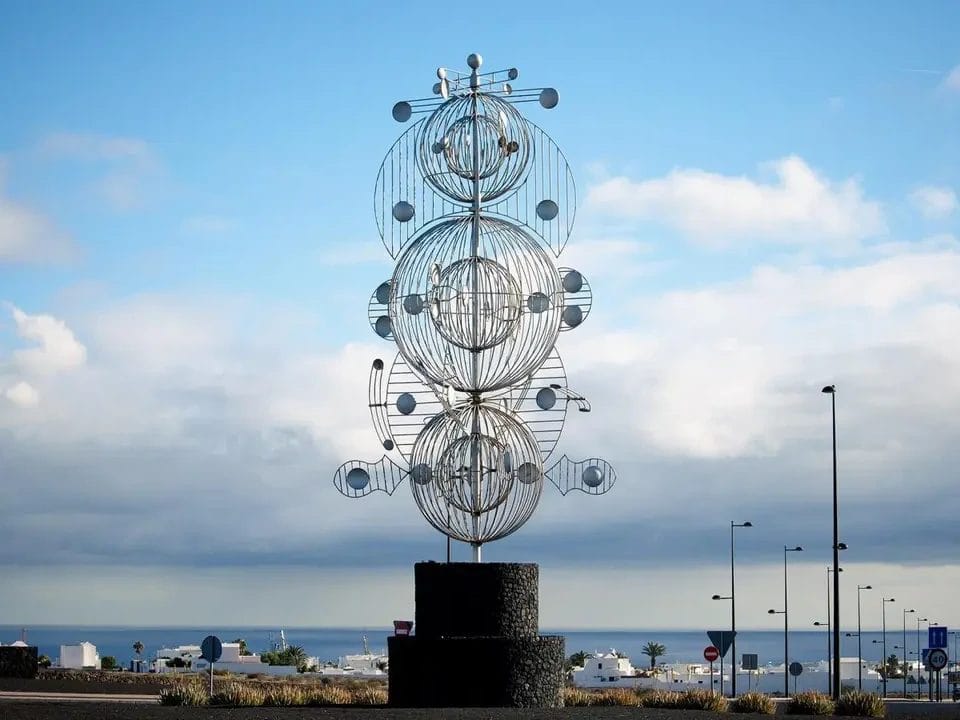
Tourism and development challenges
As tourism has grown in economic importance, its impact on the natural environment has become more evident. The balance between development and conservation poses difficulties that César Manrique already anticipated. His work has become a symbol of the struggle to maintain the balance between economic growth and the preservation of cultural and environmental heritage.
- Increased urban pressure in protected areas.
- Need to implement sustainable development models.
- Challenges in the management of mass tourism.
Manrique’s legacy serves as a guide in this context, illuminating the path towards a model of tourism that does not sacrifice the natural beauty and cultural history of the Canary Islands. The community continues to debate how to move forward in a way that ensures the preservation of what he valued so highly, as well as his vision of an environment where art and nature coexist harmoniously.
4. Frequently asked questions about the legacy of César Manrique
Below are the most common questions about the legacy that César Manrique left in the Canary Islands, as well as his influence on the culture, art and sustainability of the region.
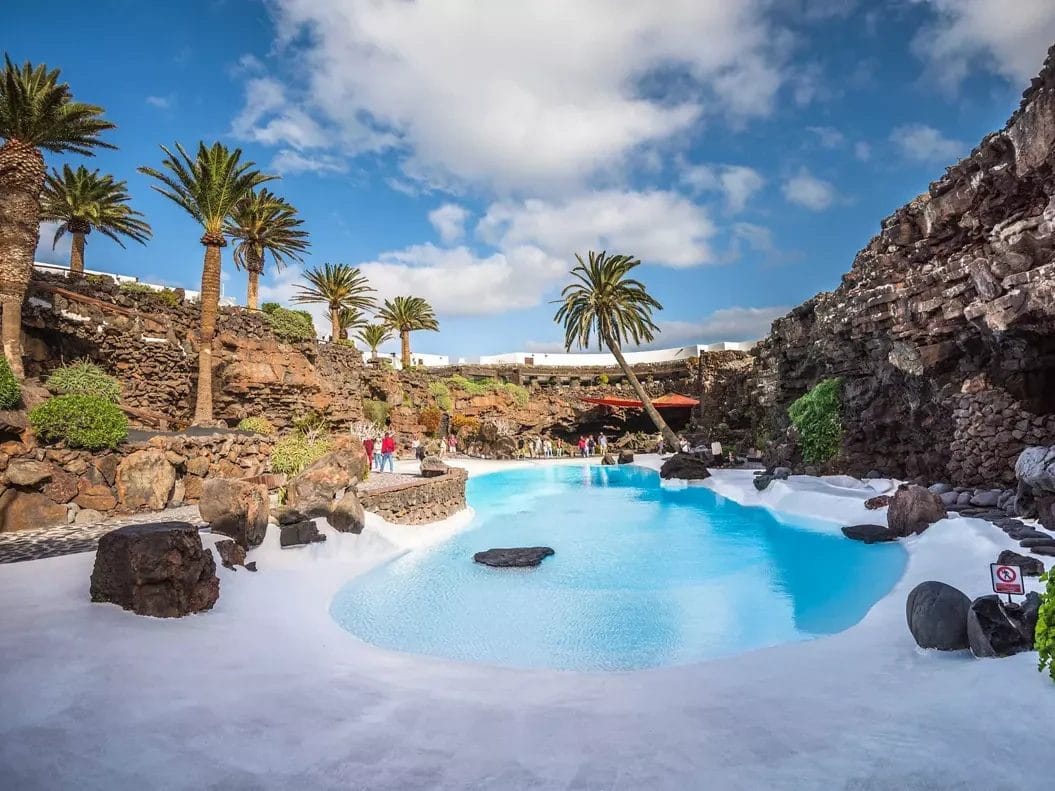
Main works in Lanzarote
Lanzarote is home to some of César Manrique’s most emblematic works. His focus on the integration of art and nature is reflected in significant projects such as the Jameos del Agua and the César Manrique Foundation.
- Los Jameos del Agua: This cultural complex stands out for its design that respects the volcanic formations and native flora, becoming a meeting place between art and nature.
- César Manrique Foundation: Located in his home, this foundation is a center for the preservation of Manrique’s artistic and cultural legacy, hosting numerous exhibitions to promote environmental education.
- Cactus Garden: A tribute to the Canary flora and biodiversity, where you can find more than 1,400 species of cactus, designed to show sustainability and respect for the natural environment.
- Casa-Museo del Campesino: This space celebrates the traditional life of Canary Island farmers, involving visitors in the local culture through educational activities.
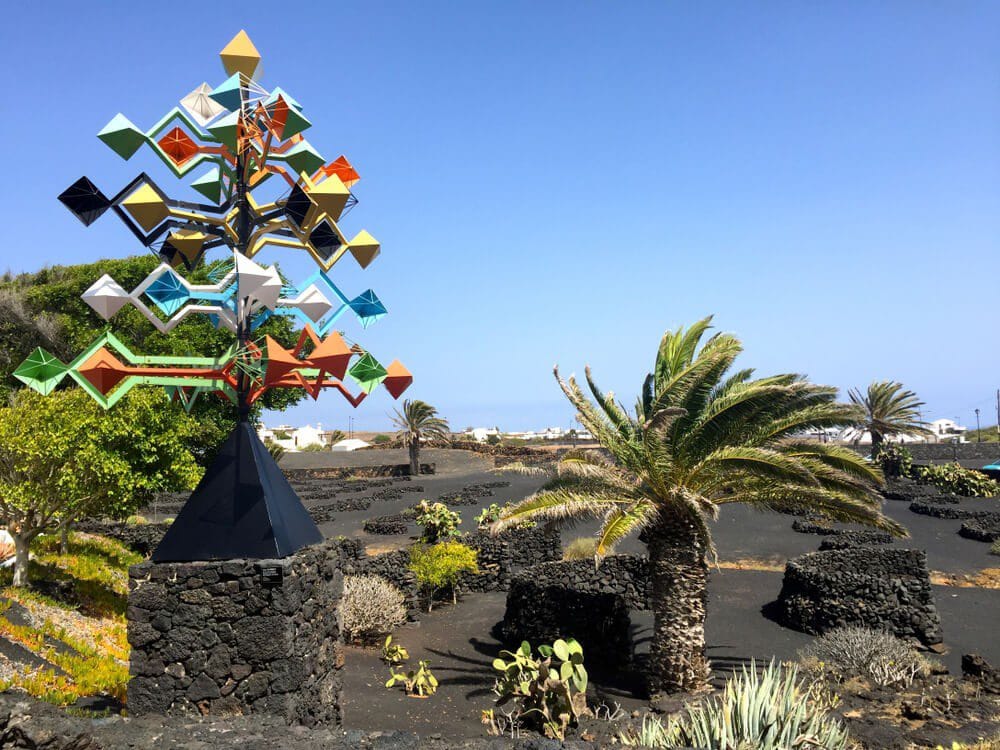
Integration of art and the natural environment
Manrique’s ability to fuse art and nature has been one of the most defining characteristics of his legacy. His methodology seeks not only to beautify the environment, but also to highlight and protect the natural features of the Canary Islands.
- Conscious design: Manrique employed indigenous materials and forms that blend seamlessly into the landscape, evidencing a deep connection to the land.
- Educational spaces: Many of its projects, such as the Mirador del Río, include elements that educate about local geography and ecology, promoting an appreciation for the natural environment among visitors.
- Respect for biodiversity: Through his work, Manrique advocated the conservation of fragile ecosystems, integrating local flora and fauna into his designs, which underlines the importance of preserving the Canarian identity.
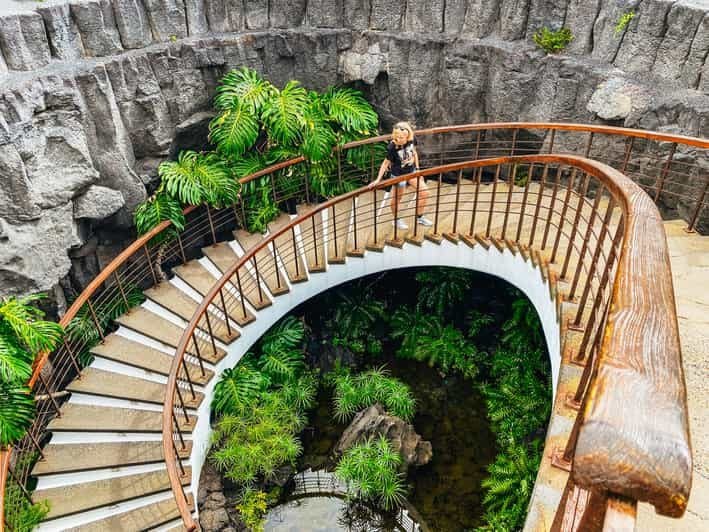
Sustainability in Manrique's work
Sustainability is a fundamental pillar of César Manrique’s work. His artistic and architectural approach not only creates visually stunning spaces, but also promotes environmentally responsible practices.
- Use of natural resources: At El Diablo Restaurant, Manrique developed a system that uses volcanic heat for cooking, demonstrating an innovative integration of architecture with environmental resources.
- Conservation projects: The César Manrique Foundation plays a crucial role in environmental education and the promotion of sustainable practices, ensuring that the artist’s legacy endures and adapts to contemporary needs.
- Social awareness: By encouraging the community to participate in cultural and educational activities, Manrique not only left a visual impact, but also a legacy in the environmental and cultural awareness of the Canary Islands.
